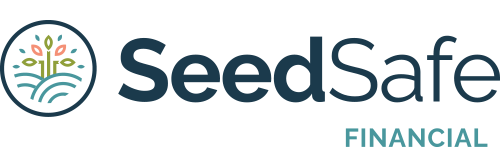
If you’ve joined the tech industry in the last 5 years, you’ve seen a huge adoption of the ‘after-tax 401(k)’. The after-tax 401(k) is an employee benefit that allows you to put more money away for retirement and implement the Mega Backdoor Roth strategy. We see this often available for our clients at larger tech companies like Amazon, Google, and Microsoft.
There are many articles on what a Mega Backdoor Roth is, but fewer that explain why you should do it and how to do it.
If you’re considering whether this strategy is worth it for you, below is a detailed look at what it is, the benefits, and potential pitfalls.
What is a Mega Backdoor Roth IRA?
First, a quick breakdown of how the Mega Backdoor Roth strategy works. Essentially, it’s a way to convert after-tax 401(k) contributions into a Roth IRA. Here’s how it works:
- In your 401(k) portal you will have the option to contribute pre-tax, Roth, and/or after-tax. Contributions to pre-tax or Roth are the usual ‘employee contribution’ we’ve seen available in 401(k) plans for a long time. For these contributions, the maximum total amount you can add to it is $23,000 in 2024 (or $30,500 if you are age 50 or older). An additional benefit is the after-tax 401(k) contribution.
- After-Tax Contributions: The limit on after-tax 401(k) contributions is up to the overall 401(k) limit of $69,000 (or $76,500 if you’re 50 or older).
- Maximum After-Tax Contributions: This varies from employer to employer. The overall 401(k) limit applies to how much you can contribute. The overall limit includes your regular employee contribution, your employer contribution, and any after-tax 401(k) contribution. This means how much your employer contributes may change the total amount you can set aside in the after-tax 401(k).
- In-Plan Roth Conversion or In-Service Withdrawal: These after-tax contributions can be converted to a Roth 401(k) or rolled over to a Roth IRA. Once rolled to a Roth and invested, they can grow tax-free. However, this is usually an election you need to make within your 401(k) portal. I’ve seen this missed by employees at Google, Amazon, etc where they thought selecting the after-tax 401(k) option was all they needed to do. Don’t forget to click that ‘Convert to Roth’ button 🙂
Benefits of a Mega Backdoor Roth IRA
- Tax-Free Growth: Once the funds are converted from the After-Tax 401(k) to a Roth account, they grow tax-free. This can add significant tax savings, especially if you have a long investment horizon before you take distributions.
- High Contribution Limits: The ability to contribute up to the overall 401(k) limit generally means you can put $40,000+ towards the strategy. This is far beyond the regular Roth IRA limits of $7,000 (or $8,000 if you’re 50 or older).
- Flexibility in Withdrawals: Your Roth IRA does not have a ‘required minimum distribution’ (RMD) during your life. This means more flexibility in retirement planning.
- Inheritance Planning: With the new inherited IRA rules post-2020, all assets in the Roth IRA must be distributed within 10 years following the original owner’s death (or 5 years for beneficiaries that are trusts and other situations). This means if you have a large IRA balance at death, then your beneficiary may recognize more income over those 10 years. This can result in a higher tax bill. If you leave a large Roth IRA balance at death, then this new rule won’t impact taxes since distributions are tax-free.
- Tax Diversification: A mix of tax-deferred, taxable, and tax-free retirement accounts can provide greater flexibility around taxes in retirement.
- High Income Earners: The Roth IRA income limit is $240,000 for married joint filers (or $161,000 for single taxpayers). This strategy gives you an opportunity to still put money towards Roth accounts.
Considerations and Potential Drawbacks
While the mega backdoor Roth IRA has considerable advantages, it’s not without potential downsides:
- Cash Flow: Don’t put the cart before the horse – if you don’t have the buffer in cash flow to enact this strategy things can go sideways fast. It’s not worth racking up credit card debt to be doing ‘all the cool hacks’. Get your spending plan right first.
- Savings Strategy: Don’t forget to prioritize 401(k) employee contributions and HSA contributions first. (Interested in why we say look at HSAs first? Find out more here.) If you are healthy and have excess cash flow, there are even greater benefits to looking at these first. There is certainly a priority list in how to consider your employee benefits
- Complexity: You need to make sure you track conversions on your tax return through the years. Maintaining IRA and Roth IRA basis in your workpapers may be vital if changes in the tax code occur. If any gains happen between the after-tax 401(k) contribution and the conversion to the Roth IRA, you will receive a Form 1099-R to add to your tax return.
- Immediate Tax Impact: The conversion of after-tax contributions to a Roth account can have immediate tax consequences on any earnings from the after-tax contributions. This is why clicking the button to allow in-plan conversions is vital!
Is It Worth It?
The decision to use a mega backdoor Roth IRA strategy depends on several factors:
- Your Financial Goals: If your goal is to maximize tax-free growth and you have the means to contribute significant amounts to your retirement savings, this strategy can be highly beneficial.
- Early Retirement: If your goal is to get out of the 9-to-5 game by age 50 or you are still working on financial flexibility, this may not be the time to lean in. Make sure you are focusing on the right mix of investment vehicles that will get you there. Locking up every-last-dollar into retirement accounts may not be for you.
- Plan Features: This strategy works best when the after-tax 401(k) allows for in-service withdrawals to minimize the tax bite.
- Current and Future Tax Brackets: Consider your current tax bracket versus your expected tax bracket in retirement. If you expect to be in a higher tax bracket later, paying taxes now on conversions may be a good idea. For our California clients, many need a $5 to $10 million investment portfolio to fully lean into financial independence. This means their future tax bracket on investment income will have a huge impact.
- Comfort with Complexity: This strategy requires a solid understanding of tax rules and reporting on your tax return. If you’re comfortable with these aspects or have a financial advisor to guide you, it can be a worthwhile endeavor.
Conclusion
The mega backdoor Roth IRA is a powerful tool for those looking to significantly boost their retirement savings and benefit from tax-free growth. However, it’s not suitable for everyone.
- Make sure you know how to enact the full strategy
- Review your finances to know where it fits in your spending/saving plan and long term goals
- Consider bringing in an expert to help you decide what will help you reach financial flexibility faster and give you a roadmap to financial independence
If you are still on the hunt for the right financial advisor for you, schedule some time with us to see how we can help grow your wealth. Find out more about our team here.
The above discussion is for informational purposes only. Recommendations are of a general nature, not based on knowledge of any individual’s specific needs or circumstances, and there is no intent to provide individual investment advisory, supervisory or management services.



